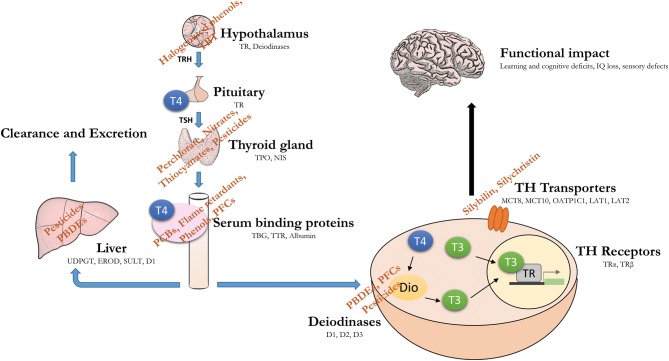Figure 1.
Endocrine-disrupting chemicals (EDCs) act at multiple levels of the hypothalamus–pituitary–thyroid (HPT) axis. Environmental chemicals have the potential to disrupt the HPT axis, alone or in combination. Given the crucial role for thyroid hormone in brain development, such disruption can have a long-lasting functional impact, such as IQ loss and increased risk of neurodevelopmental disease (note: targets not drawn to scale).

 This work is licensed under a
This work is licensed under a 